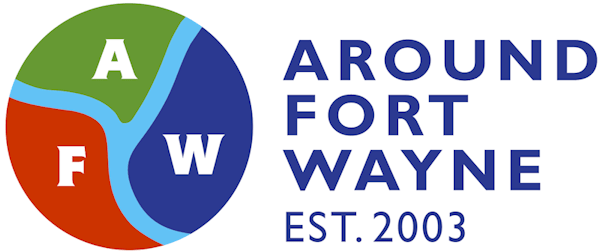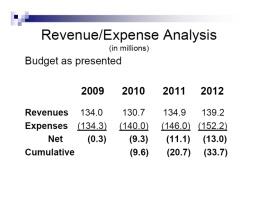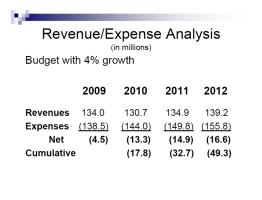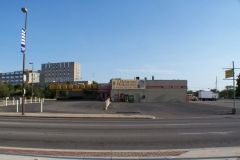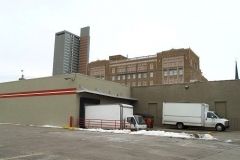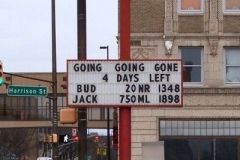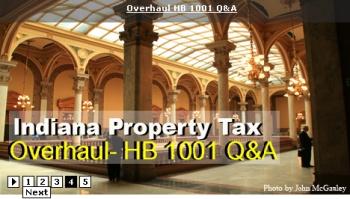
A new item has appeared on the City of Fort Wayne’s website. Â This is a Question and Answer document concerning House Bill 1001 which may be downloaded here. Â I haven’t read all the way through but one things has jumped out at me. Â First, there is a date of October 13, 2008 at the top of the document and it is addressed to Members of the Common Council from Pat Roller, City Controller. Â October 13th would have been the second session of the now epic Budget Hearings. Â I remember her passing out the document to the press. Â
In this document at the top of page 2, she states:
The council’s decision to reduce the levy in 2006 and 2007 will combine with the effects of HB1001 to create a $5.8 million deficit in 2009 and a $13.1 million shortfall in 2010, likely requiring significant budget cuts. Â A portion of the shortfall can be traced to the city’s own attempts over the past 20 years to ease the property tax burden on city residents by collecting far less in property taxes – an estimated $28.2 million by 2008 than was allowed under that law.
If you remember, Pat showed a graph in her presentation to the City Council during the first budget hearing on October 7th and then again, the same graph in the October 14th hearing to remind Council members of the projected shortfall. Â The graph is shown here:
Remember, you can download the presentations made to the City Council by various department heads and the audio recordings from the budget hearings by following this link and looking on the right side.
Anyway, my question, from this very Question & Answer on HB 1001, is this – has the projected shortfalls increased? Â The above graph, which she talked about in the budget hearing shows only a $.3 million deficit versus a $5.8 million deficit as written in the Q&A. Â Same thing in 2010, the above graph lists the deficit as $9.3 million, while the document lists it as $13.1 million and also states, “Budget as presented”.
In reviewing the presentation from October 14th, I noticed there is another graph in the next slide after the above. Â This one lists it as a, “Budget with 4% growth”.
This is closer to the $5.8 and $13.1 million in shortfalls talked about in the Q&A. Â However, these numbers are from a projected 4% growth budget not presented or currently being considered. Â In fact, the City Council is working towards making $4.5 million in cuts from the 2009 budget in preparation for the $9.3 million shortfall in 2010.
This document is actually a pretty good history lesson of property taxes in Indiana as well as explanation of House Bill 1001. Â For instance, there’s a discussion of Circuit Breakers beginning on page 6:
Instead of setting limits on tax rates, the “circuit breaker” was designed to limit local property tax levies by limiting individual taxpayers’ tax liability. Â Circuit breakers are property tax caps that move up or down based on the taxable value of property. Â Beginning in 2010, a homeowner can be billed no more than 1 percent of the gross assessed value of the home; the threshold is set at 2 percent for agricultural properties and 3 percent for business properties.
[…] If local governments set their tax rates high enough to push the tax bill over the 1 percent threshold, any amount over $1,000 goes to the taxpayer in the form of a tax credit and local governments lose it. Â The prospect of tripping the circuit breaker and losing that money is expected to encourage local governments to lower their property tax levies, which in turn lowers the tax rate.
The Q&A goes on to explore the refernda process for projects over $2 million as well as the change that local governments now collect property taxes as a group, rather than individual taxing units, this on page 8. Â This about Harrison Square on page 8:
…when the city sold bonds to finance the parking garage portion of the Harrison Square stadium project last spring, Moody’s lowered the city’s bond rating from Aa2 to Aa3, a move which will cost an undetermined amount in higher interest payments over the life of the bond. Â Moody’s analysts praised the City’s conservative management of its budget and resources, but lowered the rating because investors feared that such rigid property tax caps could make it difficult for the city to make bond payments.
The circuit breaker law has further hamstrung the City of Fort Wayne in its attempt to sell bonds using CEDIT funds as a hedge against expected budget cuts caused by the circuit breaker law. Â Again, Moody’s cited the new law when it lowered the bond rating from Aa2 to Aa3.
It goes on to talk about TIF districts and tax abatements on page 9 and on page 11, discussion about raising the local option income tax and the benefits of House Bill 1001 on different groups of citizens.
Definitely worth your time to read this one! Â Great job to Pat Roller!
